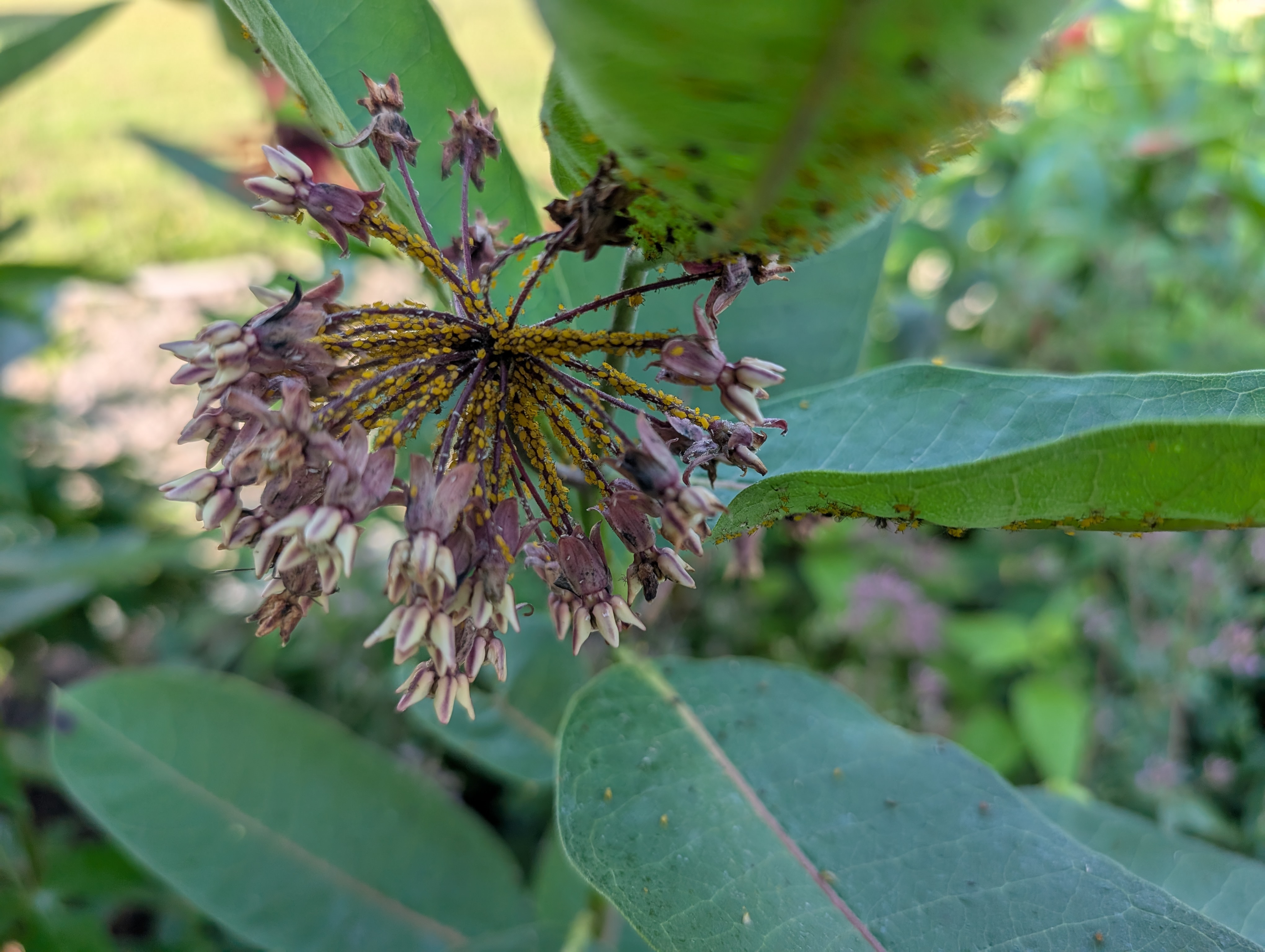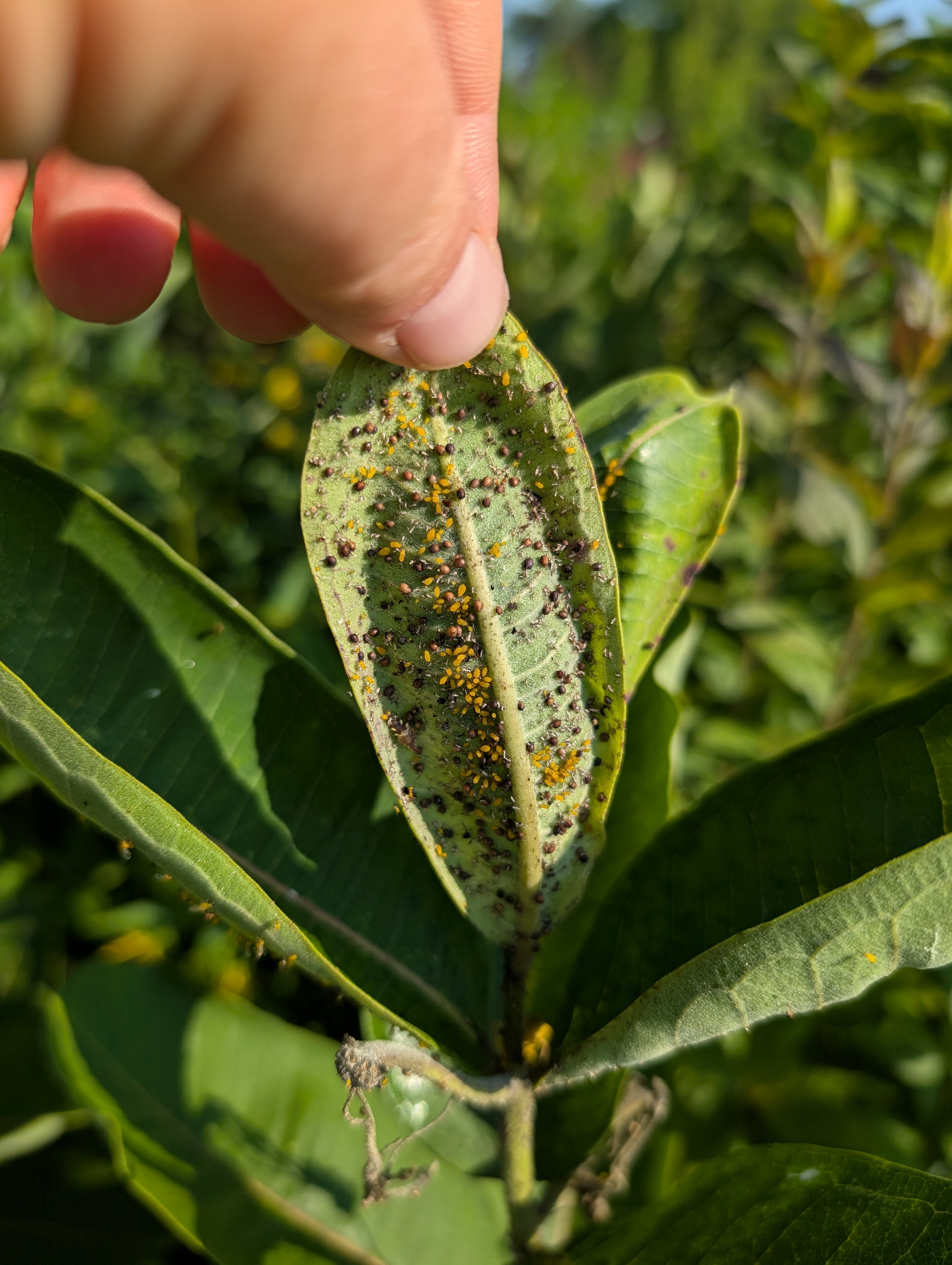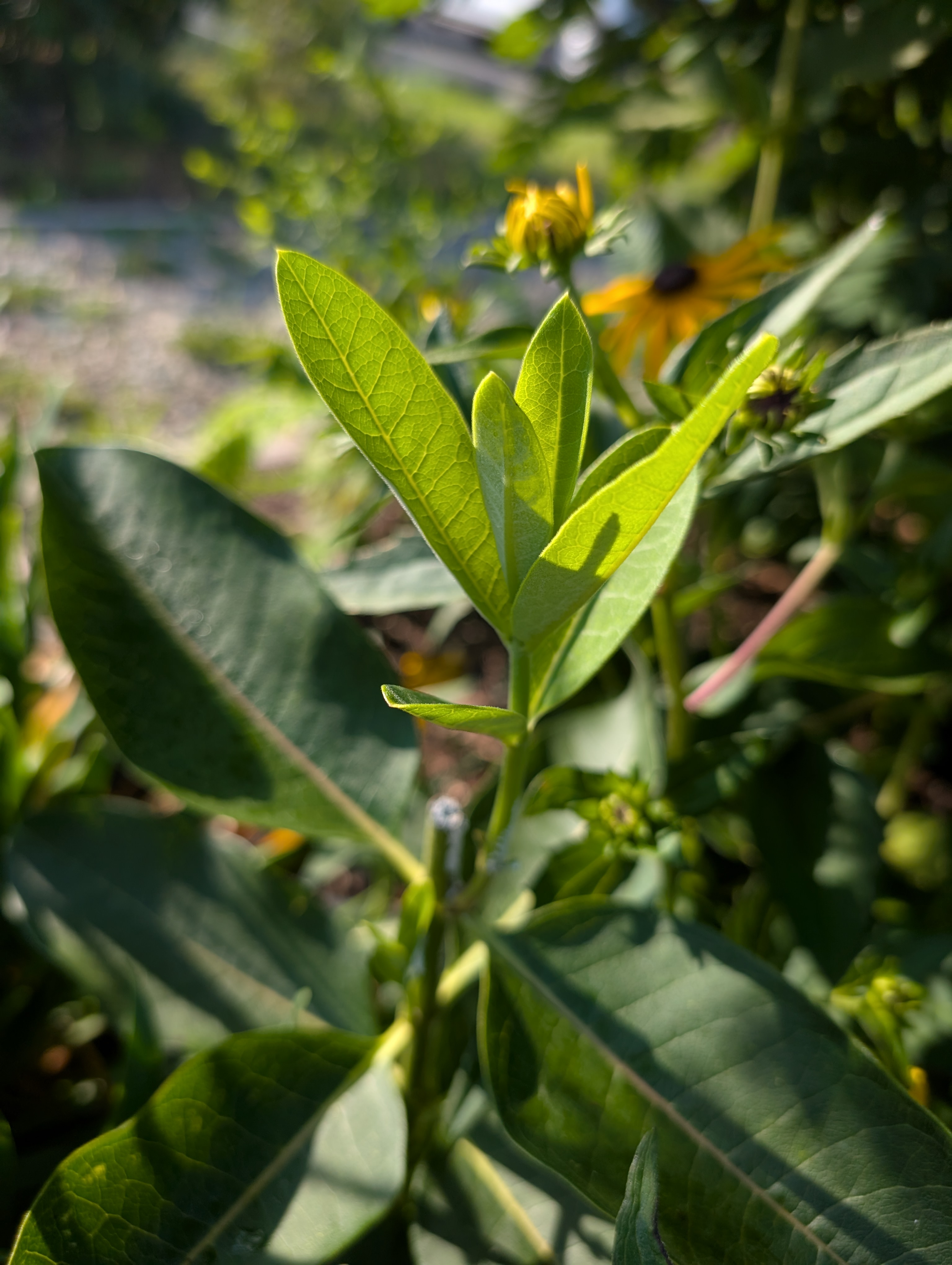Battling Aphids on Your Milkweed
go.ncsu.edu/readext?1077622
en Español / em Português
El inglés es el idioma de control de esta página. En la medida en que haya algún conflicto entre la traducción al inglés y la traducción, el inglés prevalece.
Al hacer clic en el enlace de traducción se activa un servicio de traducción gratuito para convertir la página al español. Al igual que con cualquier traducción por Internet, la conversión no es sensible al contexto y puede que no traduzca el texto en su significado original. NC State Extension no garantiza la exactitud del texto traducido. Por favor, tenga en cuenta que algunas aplicaciones y/o servicios pueden no funcionar como se espera cuando se traducen.
Português
Inglês é o idioma de controle desta página. Na medida que haja algum conflito entre o texto original em Inglês e a tradução, o Inglês prevalece.
Ao clicar no link de tradução, um serviço gratuito de tradução será ativado para converter a página para o Português. Como em qualquer tradução pela internet, a conversão não é sensivel ao contexto e pode não ocorrer a tradução para o significado orginal. O serviço de Extensão da Carolina do Norte (NC State Extension) não garante a exatidão do texto traduzido. Por favor, observe que algumas funções ou serviços podem não funcionar como esperado após a tradução.
English
English is the controlling language of this page. To the extent there is any conflict between the English text and the translation, English controls.
Clicking on the translation link activates a free translation service to convert the page to Spanish. As with any Internet translation, the conversion is not context-sensitive and may not translate the text to its original meaning. NC State Extension does not guarantee the accuracy of the translated text. Please note that some applications and/or services may not function as expected when translated.
Collapse ▲Milkweed (genus Asclepias) holds a special place in many gardens. Not only is it a cherished perennial, but it’s also the essential host plant for monarch butterfly caterpillars, playing a vital role in their incredible journey north. Gardeners often take immense pride in cultivating milkweed, knowing their efforts support these beautiful pollinators and contribute to a healthy ecosystem.
However, a common challenge arises for milkweed growers: aphid infestations.  These tiny pests can quickly turn lush, vibrant milkweed into a sticky, unsightly mess. This hinders both the plant’s appearance and its crucial function as a monarch host. There are some strategies to help gardeners balance aphid control and monarch support.
These tiny pests can quickly turn lush, vibrant milkweed into a sticky, unsightly mess. This hinders both the plant’s appearance and its crucial function as a monarch host. There are some strategies to help gardeners balance aphid control and monarch support.
What is the Problem with Aphids on Milkweed
Aphids are small, soft-bodied insects that tend to emerge in the spring and congregate on their chosen victims/plants. They are especially fond of plants that are undergoing environmental stresses that make the plants less resistant to being chewed on by insects.
The aphids can stunt plant growth because they feed by siphoning off sap (aka sugars), which steals energy away from the plants. The next insult to injury is that  through this feeding they excrete a sticky substance called honeydew, which often leads to the development of black sooty mold on the leaves. This growth limits the plant’s ability to photosynthesis.
through this feeding they excrete a sticky substance called honeydew, which often leads to the development of black sooty mold on the leaves. This growth limits the plant’s ability to photosynthesis.
While this seems gross and “bad”, this is a normal cycle with this pest/plant relationship. The worst part is an infestation can deter monarchs from laying their eggs on infested plants and reduce the number of pollinators that visit the flowers, thus reducing the effectiveness of the milkweed to support pollinators.
How Do Aphids Fit Into the Garden Picture
Aphids are a natural part of the ecosystem and serve as an important food source for beneficial insects, even though their presence can be disheartening for gardeners. They have large populations so it makes them easy prey. Predatory insects, like lady beetles and wasps, eat them like potato chips. Just this week in the Pollinator Haven Garden at the McSwain Center in Lee County the 4-Hers were ogling at all of the lady beetles we have in the Garden because of the aphids.
Another cool symbiotic relationship that happens in your garden is aphids being used as host for parasitic wasps. These wasps lay their eggs inside of the aphid, and then the larvae hatch and eat the aphid from the inside out. You can sometimes see infected aphids on your plants. They look brown, found and swollen compared to other aphids. The wasp emerges from the aphid later like something out of the movie Alien! When you see these aphid mummies, it means you have a healthy food chain and your garden is supporting a functioning ecosystem.
Non-Chemical Options for Aphid Control
It is important to practice Integrated Pest and Pollinator Management whenever you are choosing to manage a pest. IPPM takes into account the impact of pests on your  plant, the options to manage those pests, and then the impact of those management options on pollinators. In the case of milkweeds, which serve as both a host plant for monarch butterflies and a source of nectar and pollen for other pollinators, you need to be mindful of how your control methods impact the insects you are trying to support. There are four main control methods, in order of the priority that land managers should practice them: cultural, mechanical, biological and chemical.
plant, the options to manage those pests, and then the impact of those management options on pollinators. In the case of milkweeds, which serve as both a host plant for monarch butterflies and a source of nectar and pollen for other pollinators, you need to be mindful of how your control methods impact the insects you are trying to support. There are four main control methods, in order of the priority that land managers should practice them: cultural, mechanical, biological and chemical.
Culturally, keeping plants healthy and stress-free are key. Making sure they are planted in a suitable site, are not overfertilized, and receive adequate moisture and light. Most milkweeds prefer good airflow too. If you notice aphids on your milkweed, just cut the infested tips off! The plant will generally sprout back in a couple of weeks with fresh, new growth. Finally, if you let some aphids survive (and you don’t use chemical controls), you will attract their predators, which will provide biological control.
Chemical Options for Aphid Control
Notice the chemical control option should be your last resort! Aphids are mostly controlled using horticultural oil and insecticidal soap, which are usually considered acceptable in organically-managed systems. Some neem oils or soaps can also control aphids. Mixing your own concoction of dish soap and salts is not recommended ever. You should only ever apply chemicals legally labeled for the control of the pest you are trying to treat.
All that being said, it is CRITICAL that you read the ENTIRE label of any pesticide you want to use in your landscape BEFORE you apply it. There are some wily marketing departments out there that make compelling labels for their products, but that usually don’t tell you the whole story about your chemicals. If you need help interpreting a label, please contact your local N.C. Cooperative Extension office.
Pollinators All Summer
Monarch butterflies and other pollinators love milkweed plants and, as gardeners, we have the ability to make management decisions that can benefit us and our pollinator neighbors. Choose to use cultural, mechanical and biological controls before you reach for the spray, and practice an ounce of tolerance for all of the organisms involved in the functionality of the ecosystem of your garden!




